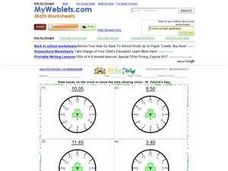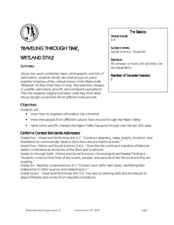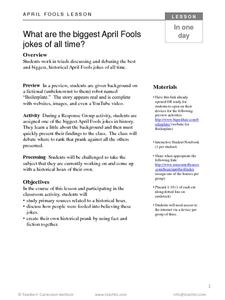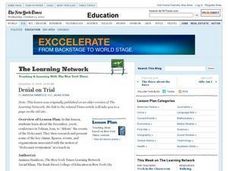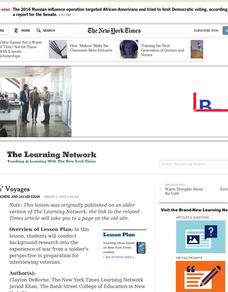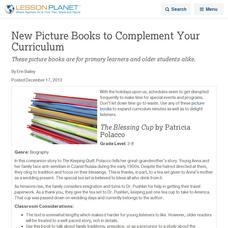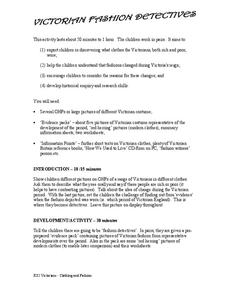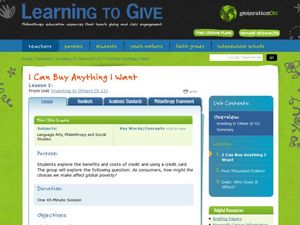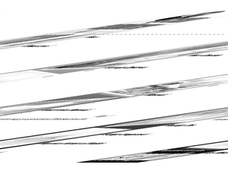Curated OER
Telling Time Timeline
Use the Internet and library resources to compose a telling time timeline -- a visual history of time. Students will develop research skills and gain perspective about telling time by discovering the history of clocks and time.
Curated OER
Draw The Hands On The Clock To Show The Time (Analog Clock Faces - St. Patrick's Day)
In this telling time learning exercise, 2nd graders draw the hands on 6 analog clock faces to the nearest 5 minutes. They see each clock decorated with a St. Patrick's day motif.
Curated OER
Time and Time Again
Students analyze the effects of time zone differences on how we function as a global community, focusing particularly on the turn of the millennium as a way for students to calculate time zone differences.
Curated OER
Time for All Ages
Fourth graders discover time keeping by analyzing technological advances in history. In this time lesson, 4th graders create and complete a KWL chart based on their research of a famous timekeeping invention, such as a sundial....
Curated OER
Traveling Through Time, Wetland Style
Students create a timeline on the development of the Pajaro Valley Area. In this social science lesson, students discuss the changes that took place in the area over the past 300 years. They draw a pictures of how the area has changed...
Curated OER
A Better Class of Journal-ists
Young academics create a current events journal by skimming newspapers for articles that fit defined guidelines for informational texts. After cutting out two articles each week to add to their journals, they write a brief description of...
Curated OER
Every Building Tells a Story
Examine images from past that depict buildings and towns from their own communities, and compare images with photographs taken at present locations, interview local architect and compare role of 19th Century architect to 21st Century...
TCI
What Are the Biggest April Fools Jokes of All Time?
After working in groups to analyze primary sources related to a historical hoax, learners will discuss how people managed to be fooled and work to identify one of the biggest April Fools jokes in history.
Curated OER
Knowing North: Understanding the Relationship Between Time and The Sun
Students determine how to find North using a watch and their shadow. In this finding North activity, students go outside on a sunny day and work with their shadow and a wrist watch to find out which direction that North is. They examine...
Curated OER
Denial on Trial
What is the "Faurisson Affair”? What is “Holocaust Revisionism”? What does freedom of speech entail? Do revisionists have a right to voice their ideas? Such questions are at the heart of a richly detailed, thought provoking lesson...
PBS
Historical Perspectives: Coming Home from War
What do the homecoming experiences of soldiers who fought in WWII, Vietnam, Iraq, and Afghanistan reveal about the politics and culture of the US during the time period of each war? Young historians view The Way We Get By, which tells...
Curated OER
Veterans' Voyages
Introduce your middle and high schoolers to a different perspective on war: that of soldier's. Read Guisseppi Ungaretti's poem "Vigil" to kick-start this instructional activity. After discussing his perspective, read "The Screaming...
Curated OER
"I Cannot Tell a Lie"
Students examine and debunk historical myths, using the American Revolution as a starting point. They create and play a game of "American History: Fact or Fiction?"
Curated OER
New Picture Books to Complement Your Curriculum
These picture books are for primary learners and older students alike.
Curated OER
Community Helpers
First graders explore the different products and services provided by community helpers. In this community helpers instructional activity, learners participate in a role playing activity where the students transform into community...
PBS
Before We Travel, We Research
Context is key when it comes to historical research. Prior to field research, class members learn as much as they can about the site they are going to visit. Groups investigate and prepare presentations about the history of the site, the...
Curated OER
The Countries of Latin America
Fifth graders study the geography, culture, government and economy of Latin American countries. They work in groups to fill out a profile describing their Latin American country. They listen to a reading of Latin American folktales and...
Teaching Ideas
Victorian Fashion Detectives
The distinctive attire of royalty, working class, and peasants of the Victorian era conveys much about the conditions of the time. Learn more about why people dressed as they did, and how their fashion changed during the 64-year reign of...
Civil War Trust
The Gathering Storm: The Coming of the Civil War
Take a longer look at a formative time in history with a lesson that explores the causes of the American Civil War. After viewing a series of images and explanations for various forces at play, middle schoolers choose the images that...
Curated OER
I Can Buy Anything I Want: Consumer Debt and Social Responsibility
A clear, comprehensive overview of consumer debt, credit, interest, international currency, and social responsibility, this 45-minute session falters in the application stage. You'll need to create a way for learners to demonstrate their...
Curated OER
"It's More Than a School": Proposing Programs to Meet Student Needs
This detailed lesson plan from New York Times' The Learning Network centers around Carroll Academy and its girl's basketball team. Learners compare their school to Carroll Academy, read anywhere from 1 to 5 engaging articles about the...
Curated OER
The Tell-Tale Plume
Students examine hydrothermal vents. In this ocean lesson, students identify changes in physical and chemical properties of sea water caused by hydrothermal vents.
Curated OER
Agriculture in Idaho: Its Importance And Development From Historical Times To the Present
Fourth graders examine importance agriculture is in their own lives and about its importance in the history of Idaho from its beginnings through the present.
Curated OER
Numbers Tell a Story
Learners connect census data to historical events. In this civics lesson plan, students understand cause and effect, and how they are reflected in census data and analyze census data for social and economic significance.

